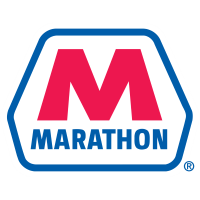
Phillips 66
NYSE:PSX


Utilize notes to systematically review your investment decisions. By reflecting on past outcomes, you can discern effective strategies and identify those that underperformed. This continuous feedback loop enables you to adapt and refine your approach, optimizing for future success.
Each note serves as a learning point, offering insights into your decision-making processes. Over time, you'll accumulate a personalized database of knowledge, enhancing your ability to make informed decisions quickly and effectively.
With a comprehensive record of your investment history at your fingertips, you can compare current opportunities against past experiences. This not only bolsters your confidence but also ensures that each decision is grounded in a well-documented rationale.
Do you really want to delete this note?
This action cannot be undone.

| 52 Week Range |
118
172.71
|
| Price Target |
|
We'll email you a reminder when the closing price reaches USD.
Choose the stock you wish to monitor with a price alert.
This alert will be permanently deleted.
 Phillips 66
Phillips 66
 Phillips 66
Accrued Liabilities
Phillips 66
Accrued Liabilities
Phillips 66
Accrued Liabilities Peer Comparison
Competitors Analysis
Latest Figures & CAGR of Competitors

| Company | Accrued Liabilities | CAGR 3Y | CAGR 5Y | CAGR 10Y | ||
|---|---|---|---|---|---|---|

|
Phillips 66
NYSE:PSX
|
Accrued Liabilities
$3.5B
|
CAGR 3-Years
3%
|
CAGR 5-Years
4%
|
CAGR 10-Years
4%
|
|

|
Marathon Petroleum Corp
NYSE:MPC
|
Accrued Liabilities
$1.7B
|
CAGR 3-Years
12%
|
CAGR 5-Years
3%
|
CAGR 10-Years
9%
|
|

|
Valero Energy Corp
NYSE:VLO
|
Accrued Liabilities
$2.5B
|
CAGR 3-Years
-6%
|
CAGR 5-Years
4%
|
CAGR 10-Years
3%
|
|

|
PBF Energy Inc
NYSE:PBF
|
Accrued Liabilities
$2.7B
|
CAGR 3-Years
-9%
|
CAGR 5-Years
9%
|
CAGR 10-Years
7%
|
|

|
Sunoco LP
NYSE:SUN
|
Accrued Liabilities
$503m
|
CAGR 3-Years
18%
|
CAGR 5-Years
15%
|
CAGR 10-Years
44%
|
|

|
HF Sinclair Corp
NYSE:DINO
|
Accrued Liabilities
$561.2m
|
CAGR 3-Years
0%
|
CAGR 5-Years
4%
|
CAGR 10-Years
16%
|
|
Phillips 66
Glance View
Phillips 66 is a diversified energy manufacturing and logistics company that has carved out a significant niche in the oil and gas sector since its inception as a spin-off from ConocoPhillips in 2012. With a rich history rooted in the energy industry, Phillips 66 operates through four key segments: refining, midstream, chemicals, and marketing. Its expansive network of refineries, pipelines, and terminals not only enhances its operational efficiency but also positions the company to capitalize on fluctuations in crude oil prices and growing demands for fuels and petrochemicals. Investors are drawn to Phillips 66’s strategic focus on optimizing its refining operations and expanding its midstream logistics capabilities, which exemplify its adaptability in a dynamic market. What makes Phillips 66 particularly appealing to investors is its commitment to generating shareholder value through sustainable capital returns. The company has a consistent track record of dividend payments, reflecting a strong balance sheet and prudent financial management. Furthermore, its focus on innovation and environmental stewardship aligns with the growing emphasis on sustainability in the energy sector. As global energy demands evolve and the transition to cleaner energy sources progresses, Phillips 66 stands out by investing in renewable initiatives and staying ahead of industry trends. For investors, this blend of a robust operational framework, commitment to returns, and a forward-thinking approach paints a promising picture of potential growth and resilience in a rapidly changing energy landscape.

See Also
What is Phillips 66's Accrued Liabilities?
Accrued Liabilities
3.5B
USD
Based on the financial report for Sep 30, 2024, Phillips 66's Accrued Liabilities amounts to 3.5B USD.
What is Phillips 66's Accrued Liabilities growth rate?
Accrued Liabilities CAGR 10Y
4%
Over the last year, the Accrued Liabilities growth was -8%. The average annual Accrued Liabilities growth rates for Phillips 66 have been 3% over the past three years , 4% over the past five years , and 4% over the past ten years .


 You don't have any saved screeners yet
You don't have any saved screeners yet
